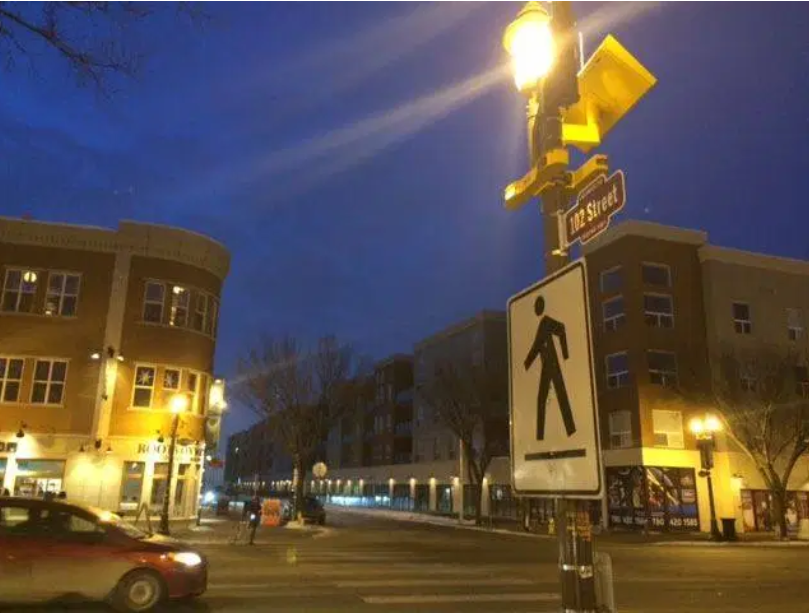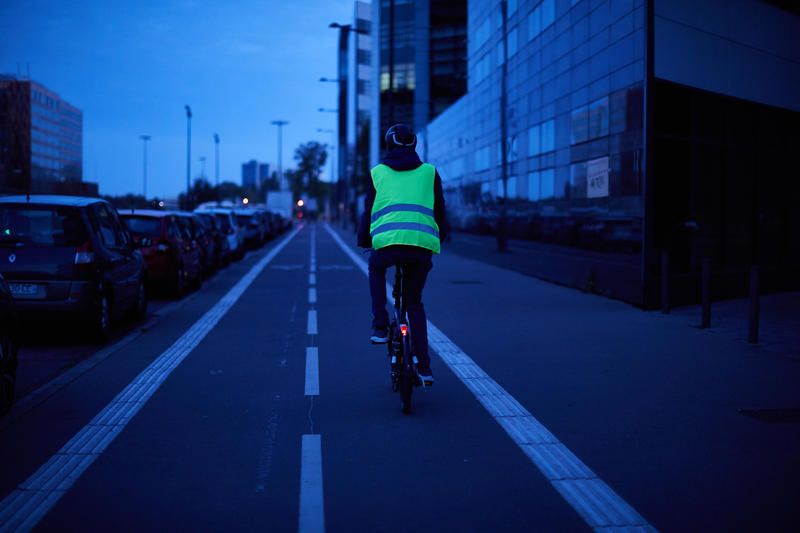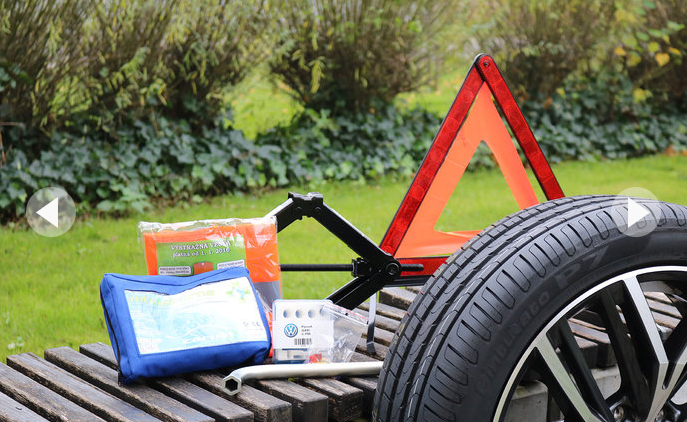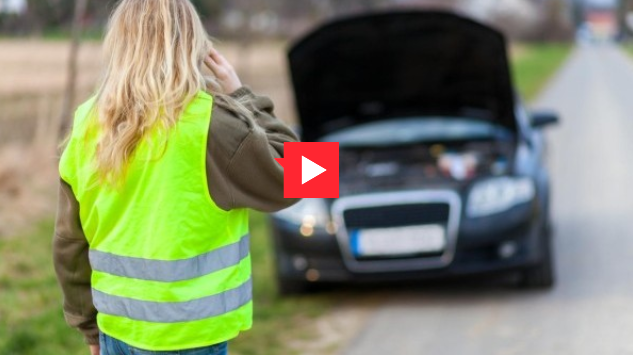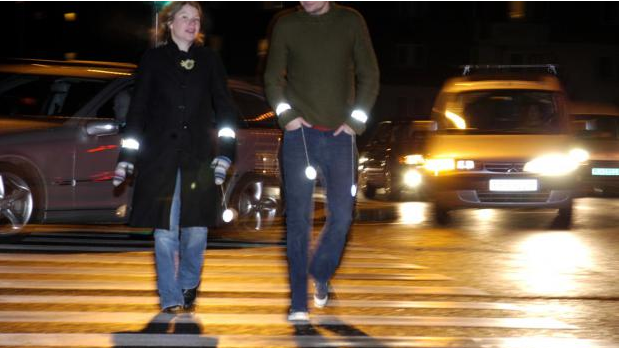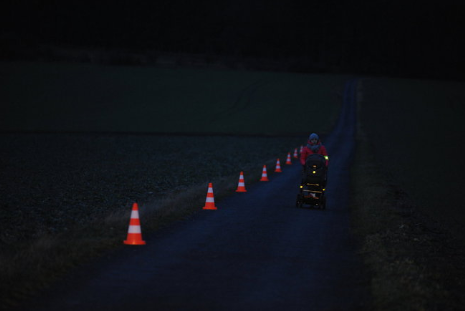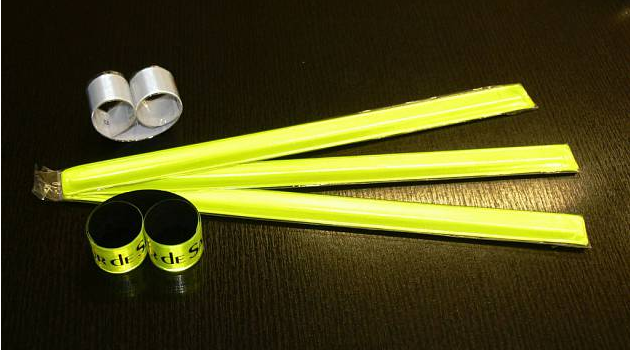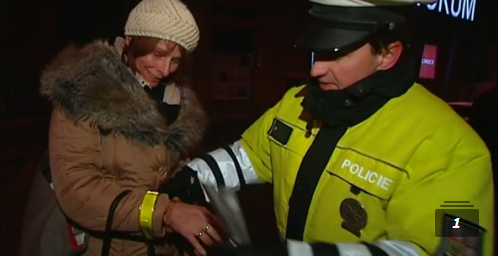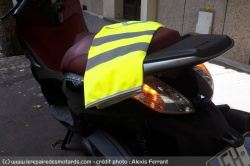Suggestions from the City of Edmonton that pedestrians should wear reflective tape to avoid collisions with vehicles as the daylight hours diminish are being met with a bit of backlash.
Will Edmonton adopt “Vision Zero”?
As part of its annual “Heads Up” campaign, the City of Edmonton put out a test ad to the Edmonton Insight Community that urges pedestrians to wear reflective material or attach reflectors to themselves to avoid being struck by a vehicle.
While the ad hasn’t been rolled out on the streets of Edmonton yet, some have shared the poster on social media. It shows a pedestrian wearing reflective tape and another carrying a flashlight. The same tips can also be found on the city’s website.
“When drivers are watching for headlights, wearing a strip of reflective material or a reflector can save your life,” the city’s website reads.
The test ad is part of the City of Edmonton’s “Vision Zero” campaign, a global initiative adopted by the city that aims to have zero fatalities and serious injuries on city streets.
Troy Pavlek, a local software developer who plans to run for Ward 11 councilor in the next municipal election, said the campaign goes against everything Vision Zero hopes to achieve.
“The big problem with this campaign is it continues a sort of trend the city has put forward where the onus seems to be on the pedestrian to modify their behavior to stay safe on the streets and that is not Vision Zero,” Pavlek said.
“When we’re saying it’s behaviors that need to be modified here, that’s the problem.”
The council hopeful said Vision Zero seeks to have the traffic system change to accommodate user behaviors, not the other way around. Pavlek believes the city should do more to make traffic infrastructure safer for pedestrians and drivers.
“Lighting crosswalks, putting more pedestrian crossing lights,” he said. “Extending curbs wherever pedestrians are frequently crossing is both a cheap and very effective way at signaling to pedestrians that: ‘this is a safe and convenient place to cross,’ as well as to drivers: ‘the road narrows here so you need to slow down. ‘ ”
According to the city, a pedestrian who wears dark clothing in the dark is not visible to drivers until they are 36 meters away from the vehicle.
“No matter who is at fault, a human body is no match for a vehicle. Pedestrians have only a 10 percent chance of surviving if the vehicle that strikes them is traveling over 50 km / h, “the city’s website reads.
A spokesperson with the city said pedestrians and drivers share responsibility when it comes to preventing collisions and it was not the intention of the test ad to place blame. While changes to infrastructure are in the works, Gary Dyck with the city’s Transportation Department said change doesn’t happen overnight.
“As you might guess, changing infrastructure takes time whereas daylight is decreasing now. So if we can tell pedestrians, drivers, to look out for each other now, we might save a life, “Dyck said.
“When it comes to a collision between a pedestrian and a car, a pedestrian always loses. So it doesn’t matter whose fault it is, the pedestrian loses. So if we can remind drivers to look out for pedestrians and pedestrians to be as visible as possible, we can save lives. ”
Pavlek maintains the initiative will discourage people from walking, which he said: “flies in the face” of what the cities messaging is supposed to be.
“We’re supposed to be prioritizing active modes of transportation – walking, cycling, taking public transportation – and instead, this puts pedestrians on the same level of responsibility as cars for managing their safety,” he said.
“It makes walking something that a pedestrian has to plan to do,” he continued. “When we make it more inconvenient for people to walk places by saying, ‘if you don’t wear reflective tape or reflective vest you’re insignificant danger’ that is going to make everyone less safe because we will get fewer people walking.”
Pavlek said it’s time to stop playing the blame game and instead, rally the city for a change.
“We need to stop blaming pedestrians, stop blaming drivers and start encouraging people to work together and encourage better design,” he said.

